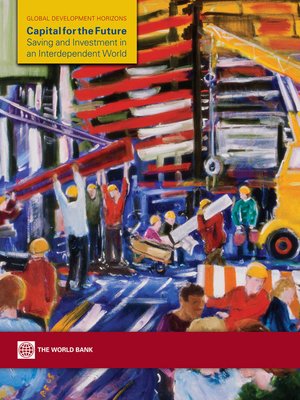Capital for the Future
ebook ∣ Saving and Investment in an Interdependent World · Global Development Horizons
By The World Bank

Sign up to save your library
With an OverDrive account, you can save your favorite libraries for at-a-glance information about availability. Find out more about OverDrive accounts.
Find this title in Libby, the library reading app by OverDrive.



Search for a digital library with this title
Title found at these libraries:
| Library Name | Distance |
|---|---|
| Loading... |
The gradual acceleration of growth in developing countries is a defining feature of the past two decades. This acceleration came with major shifts in patterns of investment, saving, and capital flows. This second volume in the Global Development Horizons series analyzes these shifts and explores how they may evolve through 2030.
Average domestic saving in developing countries stood at 34 percent of their GDP in 2010, up from 24 percent in 1990, while their investment was around 33 percent of their GDP in 2012, up from 26 percent. These trends in saving and investment, along with higher growth rates in developing countries, have resulted in developing countries' share of global savings now standing at 46 percent, nearly double the level of the 1990s.
The presence of developing countries on the global stage will continue to expand over the next two decades. Analysis in this report projects that by 2030, China will account for 30 percent of global investment activity, far and away the largest share of any single country, while India and Brazil (at 7 percent and 3 percent) will account for shares comparable to those of the United States and Japan (11 percent and 5 percent). The complex interaction among aging, growth, and financial deepening can be expected to result in a world where developing countries will contribute 62 of every 100 dollars of world saving in 2030, up from 45 dollars in 2010, and where they account for between $6.2 trillion and $13 trillion of global gross capital flows, rising from $1.3 trillion in 2010.
Trends in investment, saving, and capital flows through 2030 will affect economic conditions from the household level to the global macroeconomic level, with implications not only for national policy makers but also for international institutions and policy coordination. Policymakers preparing for this change will benefit from a better understanding of the unfolding dynamics of global capital and wealth in the future.
This book is accompanied by a website, http://www.worldbank.org/CapitalForTheFuture, that includes a host of related electronic resources: data sets underlying the two main scenarios presented in the report, background papers, technical appendixes, interactive widgets with variations to some of the assumptions used in the projections, and related audio and video resources.







